
FIRE TECHNOLOGY
Scope & Guideline
Bridging Theory and Practice in Fire Technology
Introduction
Aims and Scopes
- Fire Dynamics and Behavior:
Research on the physical and chemical processes involved in fire phenomena, including flame propagation, heat transfer, and smoke behavior in various environments. - Fire Safety Engineering:
Development and assessment of engineering principles and designs aimed at preventing fire incidents and mitigating their impacts, including structural fire protection and fire-resistance design. - Fire Suppression Technologies:
Innovations in fire suppression systems, including water mist, foam agents, and new extinguishing agents, focusing on their effectiveness and application in different scenarios. - Fire Risk Assessment and Management:
Studies involving the evaluation and management of fire risks, including probabilistic risk assessment, evacuation modeling, and the socio-economic factors influencing fire safety. - Material Performance Under Fire Conditions:
Investigations into how various materials behave under fire exposure, including char formation, thermal degradation, and the effectiveness of fire-retardant treatments. - Technological Advances in Fire Detection and Monitoring:
Research on advanced fire detection systems utilizing machine learning, computer vision, and sensor technologies to enhance early warning capabilities. - Human Behavior in Fire Situations:
Analysis of human responses during fire emergencies, focusing on evacuation behavior, risk perception, and the effectiveness of fire safety communication. - Environmental Impacts of Fire:
Exploration of the ecological consequences of fires, including wildfire dynamics, emissions, and the impact of firefighting efforts on the environment.
Trending and Emerging
- Lithium-Ion Battery Fire Safety:
With the growing reliance on lithium-ion batteries in various applications, research on their fire safety, including thermal runaway and suppression methods, has become a prominent theme. - Smart Fire Detection Systems:
The integration of artificial intelligence and machine learning in fire detection systems is a rapidly emerging area, focusing on improving the accuracy and efficiency of fire detection and response. - Performance-Based Fire Safety Design:
There is an increasing emphasis on performance-based approaches in fire safety design, which allow for more tailored and effective fire safety solutions compared to prescriptive methods. - Hybrid Materials in Fire Protection:
Research on hybrid materials that combine fire-resistant properties with other functional characteristics is trending, particularly in the context of sustainable building materials. - Sustainable Fire Suppression Agents:
The development and evaluation of environmentally friendly fire suppression agents is gaining attention, reflecting a broader commitment to sustainability in fire safety practices. - Socioeconomic Factors in Fire Safety:
Emerging studies are increasingly focusing on the socio-economic dimensions of fire safety, including disparities in fire response and the impact of community characteristics on fire risk. - Wildfire Dynamics and Management:
Research addressing the dynamics of wildfires, including their behavior, prediction, and management strategies, has become significantly more relevant due to the increasing frequency and intensity of wildfire incidents globally.
Declining or Waning
- Traditional Fire Testing Methods:
With the rise of computational modeling and simulation techniques, traditional empirical fire testing methods have seen a decline in new research contributions, as many studies now rely on advanced simulations for fire behavior assessments. - Single-Factor Fire Risk Assessments:
There has been a noticeable decrease in studies focusing solely on single-factor analyses of fire risks, as contemporary research emphasizes multi-dimensional risk assessments that consider various interacting factors. - Low-Temperature Fire Dynamics:
Research specifically addressing fire dynamics at low temperatures has diminished, likely due to a broader focus on high-temperature scenarios which pose more immediate risks in fire safety contexts. - Historical Fire Incident Analysis:
While historical analyses of fire incidents have been valuable, there appears to be a waning interest in purely retrospective studies, with a shift towards predictive modeling and real-time analysis. - Flammability of Conventional Building Materials:
The exploration of the flammability of conventional materials has declined as attention has shifted towards innovative materials and sustainable building practices that prioritize fire safety.
Similar Journals
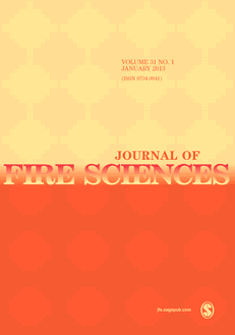
JOURNAL OF FIRE SCIENCES
Shaping the future of fire science and risk management.The JOURNAL OF FIRE SCIENCES, published by SAGE PUBLICATIONS LTD, is a leading scholarly platform that has been advancing the understanding of fire dynamics, safety measures, and material behaviors since its inception in 1983. With an impact factor that reflects its rigorous peer-review standards and significant contributions to the fields of Mechanical Engineering, Mechanics of Materials, and Safety, Risk, Reliability, and Quality, this journal is rated Q2 in its respective categories as of 2023. Researchers and professionals will find valuable insights that span theoretical frameworks and practical applications, encouraging the development of innovative fire safety solutions. With its commitment to disseminating high-quality, impactful research, the JOURNAL OF FIRE SCIENCES stands as an essential resource for those dedicated to enhancing fire safety and risk management practices worldwide. For more information about submission guidelines and access options, please visit the journal's official page.
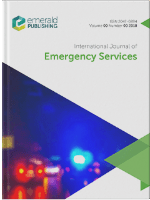
International Journal of Emergency Services
Advancing knowledge in emergency response strategies.The International Journal of Emergency Services, published by Emerald Group Publishing Ltd, is a pivotal resource in the fields of management science, operations research, and safety research. With its ISSN 2047-0894 and E-ISSN 2047-0908, this journal serves as a platform for innovative research and discourse from 2012 through to 2024. Recognized for its quality, it holds a Q3 ranking in both management and safety categories, demonstrating its commitment to advancing knowledge and practice in emergency services. The journal is particularly valued for its contributions to enhancing operational efficiency, promoting safety, and addressing the evolving challenges faced by emergency service professionals globally. It attracts a diverse readership comprising researchers, practitioners, and students keen to explore cutting-edge findings and methodologies. With access options tailored for academic and professional communities, the International Journal of Emergency Services remains an essential reference for those seeking to improve emergency response frameworks and strategies within the UK and beyond.

Journal of Structural Fire Engineering
Bridging theory and practice in fire engineering.The Journal of Structural Fire Engineering is a premier academic publication dedicated to advancing the field of fire safety and structural engineering. Published by Emerald Group Publishing Ltd, this journal features high-quality research and innovative solutions addressing crucial aspects of safety, risk, reliability, and the mechanics of materials. With an impact factor that reflects its growing influence in the academic community and a classification in the Q3 quartile across several engineering categories, the journal plays a vital role in disseminating knowledge that bridges theoretical concepts and practical applications. With coverage spanning from 2010 to 2024, researchers, professionals, and students can access a wealth of studies that explore the intersection of structural integrity and fire safety. While it currently operates under a subscription model, the journal remains committed to sharing pivotal insights that drive forward the discipline. Join the community of experts striving to enhance engineering practices and resilience against fire-related hazards.
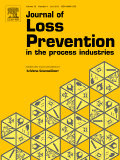
JOURNAL OF LOSS PREVENTION IN THE PROCESS INDUSTRIES
Empowering industries through cutting-edge risk management research.The Journal of Loss Prevention in the Process Industries, published by Elsevier Science Ltd, stands as a vital platform for advancing knowledge and practice in risk management and safety within the fields of chemical engineering, industrial and manufacturing engineering, and beyond. With an H-Index reflecting significant scholarly influence, this journal features a diverse scope, addressing critical issues from process safety and reliability to innovative solutions for energy efficiency. Ranking in the second quartile (Q2) across several categories, including Control and Systems Engineering and Safety, Risk, Reliability and Quality, it highlights the interdisciplinary nature of loss prevention strategies. Researchers and professionals can access this journal through subscription, ensuring they stay at the forefront of developments from 1988 to 2024. As a hub of cutting-edge research, the journal not only aims to disseminate high-quality studies but also fosters a community dedicated to enhancing safety and operational excellence in process industries worldwide.
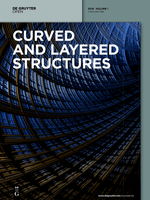
Curved and Layered Structures
Unlocking the Potential of Curved StructuresCurved and Layered Structures, published by DE GRUYTER POLAND SP Z O O, is a distinguished open-access journal that has been an essential platform since 2014 for academics and professionals in the fields of Aerospace Engineering, Architecture, Building and Construction, Civil and Structural Engineering, and Computational Mechanics. With an ISSN of 2353-7396, it is recognized for its impactful contributions, reflected in its impressive category quartiles, particularly Q1 in Architecture and notable rankings in various engineering disciplines. The journal's scope encompasses innovative research focusing on the intricate designs and applications of curved and layered structures, making it pivotal for advancing knowledge in these areas. The open-access format ensures widespread dissemination of research findings, promoting accessibility and collaboration among researchers and practitioners worldwide. As it navigates its converged years from 2014 to 2024, Curved and Layered Structures continues to attract high-quality submissions that push the boundaries of engineering and architectural design.
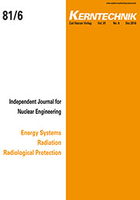
KERNTECHNIK
Bridging research and industry for nuclear advancements.KERNTECHNIK is a distinguished journal specializing in the fields of Materials Science, Nuclear and High Energy Physics, and Nuclear Energy and Engineering. Published by WALTER DE GRUYTER GMBH, this journal has continuously contributed to advancing knowledge and research in nuclear technologies and related safety measures since its inception in 1969. With an ISSN of 0932-3902 and an E-ISSN of 2195-8580, KERNTECHNIK serves as a vital platform for academics and professionals seeking to delve into both theoretical and practical aspects of nuclear science and technology. Though listed in the Q4 quartile across multiple categories in 2023, the journal's commitment to publishing rigorously peer-reviewed articles ensures that it remains a respected resource, facilitating academic discourse and innovation. It is particularly aligned for those conducting research or working in safety, risk, reliability, and quality within the nuclear sector, and its extensive historical archive allows for in-depth exploration of evolving technologies. Aimed at foster cooperation between researchers, policymakers, and industry experts globally, KERNTECHNIK continues to play an important role in shaping the future of nuclear science.
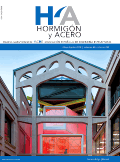
Hormigon y Acero
Exploring New Frontiers in Construction ScienceHormigon y Acero, an esteemed journal published by the ASOC ESPANOLA INGENIERIA ESTRUCTURAL-ACHE, serves as a vital resource in the fields of structural engineering and construction. With an ISSN of 0439-5689 and an E-ISSN of 2605-1729, this journal plays a critical role in disseminating innovative research and advancements from 2019 to 2024, particularly focusing on concrete and steel applications. Although it does not currently offer open access, its contributions remain invaluable to professionals and academics seeking to enhance their understanding and practices in engineering disciplines. Ranked within the 13th percentile in Building and Construction and the 9th percentile in Civil and Structural Engineering according to Scopus, Hormigon y Acero is recognized for its rigorous peer-reviewed content that addresses contemporary challenges and innovations within the industry. The journal is positioned in Madrid, Spain, and aims to foster collaboration and knowledge exchange among researchers, practitioners, and students dedicated to the advancement of structural engineering.

Building Services Engineering Research & Technology
Shaping Tomorrow’s Building Services Through Rigorous ResearchBuilding Services Engineering Research & Technology is a leading journal published by SAGE Publications Ltd, dedicated to advancing the field of building services engineering. With an ISSN of 0143-6244 and an E-ISSN of 1477-0849, the journal has established itself as a vital resource since its inception in 1980, operating as an essential platform for disseminating high-quality research and technological innovations up to 2024. The journal is well-respected within the academic community, reflected in its Q2 category ranking in Building and Construction and a commendable 67th percentile rank among the 223 journals in its field, according to Scopus. Although it does not offer open access, it provides extensive insights and rigorous studies that are invaluable for researchers, practitioners, and students alike. As a central hub for the exploration of cutting-edge methods and principles in building services, the journal aims to foster a better understanding of sustainable and innovative practices within the industry.

FIRE AND MATERIALS
Igniting Knowledge in Material ScienceFIRE AND MATERIALS, published by Wiley, is a prestigious journal that provides a vital platform for the dissemination of high-quality research in the fields of materials science and engineering, particularly focusing on the complex interactions between fire and various materials. With an ISSN of 0308-0501 and an E-ISSN of 1099-1018, the journal boasts a commendable impact factor ranking in the top quartiles for multiple categories, including Ceramics and Composites, Chemistry (Miscellaneous), and Electronic, Optical and Magnetic Materials. The journal’s robust Scopus ranks reflect its influence in the materials science community, with a notable position in the 75th percentile for Metals and Alloys. Although Open Access is not an option, the journal ensures wide accessibility and readership within the academic and professional spheres. FIRE AND MATERIALS serves as an essential resource for researchers, professionals, and students interested in the behaviors of materials under thermal stress, contributing significantly to advancements in safety and performance in diverse applications.

Journal of Coatings Technology and Research
Advancing the Future of Coatings TechnologyThe Journal of Coatings Technology and Research, published by Springer, stands as a vital resource for researchers and professionals in the fields of materials science and chemistry. With an ISSN of 1547-0091 and an E-ISSN of 1935-3804, this journal is recognized for its significant contributions to the study of coatings technology, encompassing diverse aspects from surfaces and interfaces to colloids and surface chemistry. Currently holding a 2023 Impact Factor that places it in the Q2 and Q3 quartiles across several categories—including Chemistry and Colloid and Surface Chemistry—the journal serves as an essential platform for disseminating innovative research. Its accessibility options cater to a broad audience, ensuring that both established scholars and emerging researchers can engage with the latest findings. Since its inception in 2004, the journal has continued to foster advancements in coatings technologies, promoting sustainable practices and novel applications across industries.